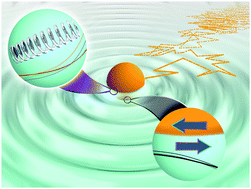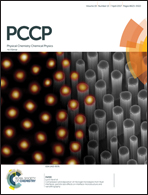Brownian diffusion of a particle at an air/liquid interface: the elastic (not viscous) response of the surface
Abstract
Here, the effect of the elastic response of the surface on the translational diffusion coefficient of a partly submerged-in-water spherical Brownian particle is considered. The elastic nature of the surface, mediated by the surface tension, generates an additional dissipative mechanism. Therefore, the collisions at the surface contribute to the diffusion as the source of the driving force and the dissipation results from the combined action of both elastic reaction of the surface and viscous dissipation. However, it can be estimated that the surface elastic mechanism is several orders of magnitude greater than the viscous one. This simple yet physically plausible approach leads us to assume that the diffusion on the surface is proportional to a power of the number of collisions and, consequently, the dissipative mechanisms are proportional to an inverse power of it. The lowering in dimensionality from 3 (bulk) to 2 (surface) also contributes to the decrease of diffusion. This model allows the reproduction of the reported experimental values of the surface/bulk dissipative force ratio. Additionally, we also compared the traditional viscous approach with other theoretical hydrodynamic treatments of the problem, which drastically failed to explain the experiments.



 Please wait while we load your content...
Please wait while we load your content...